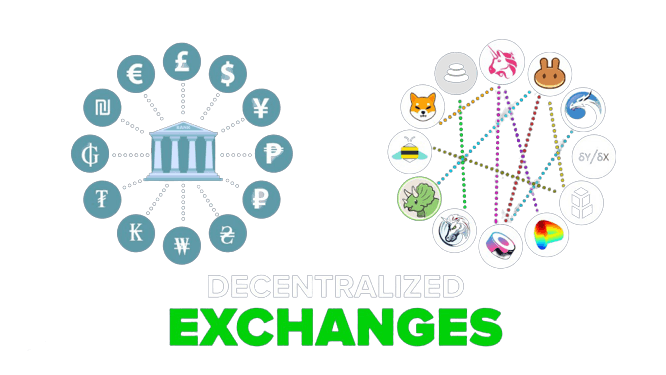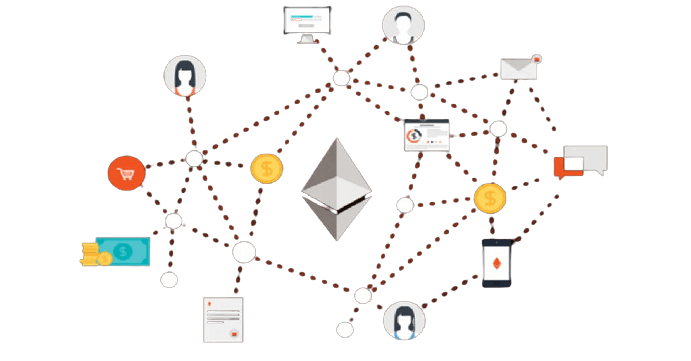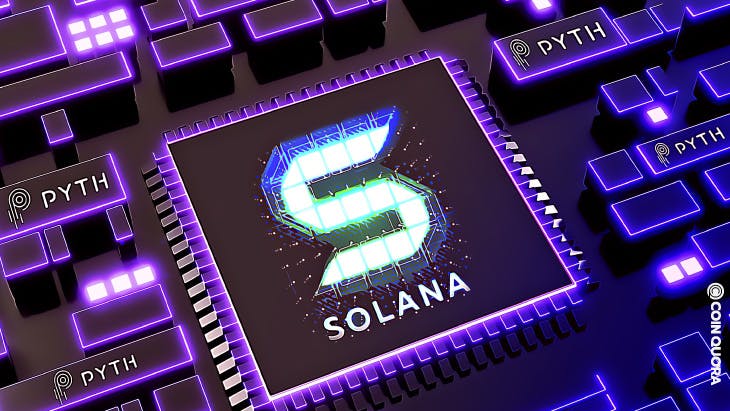Table of contents
- 🔹 Algo-Trading (Algorithmic Trading)
- 🔹 InterPlanetary File System (IPFS)
- 🔹 51% Attack
- 🔹 Airdrop
- 🔹 Block Size
- 🔹 Lambo
- 🔹 Blockchain 3.0
- 🔹 Stablecoin
- 🔹 HODL
- 🔹 Buy The (F******* ) Dip (BTD/BTFD)
- 🔹 Smart Contract
- 🔹 Layer 2
- 🔹 GM
- 🔹 Consensus
- 🔹 Proof-of-Work (PoW)
- 🔹 Byzantine Fault Tolerance (BFT)
- 🔹 Off-Chain
- 🔹 Minting
- 🔹 Cold Storage
- 🔹 DAO
- 🔹 Dead Cat Bounce
- 🔹 Testnet
- 🔹 dApps
- 🔹 MetaMask
- 🔹 Decentralized Exchange (DEX )
- 🔹 Centralized Exchange (CEX )
- 🔹 Mainnet
- 🔹 DeFi
- 🔹 Liquidity Mining
- 🔹 Dumping
- 🔹 Tokens
- 🔹 Dusting Attack
- 🔹 ERC-20
- 🔹 Ethereum Virtual Machine (EVM)
- 🔹 Faucet
- 🔹 Gas
- 🔹 Hard Fork
- 🔹 Metaverse
- 🔹 Cryptocurrency (crypto )
- 🔹 Crypto Wallet
- 🔹 Miner
- 🔹 NFT
- 🔹 Ethereum
- 🔹 Solidity
- 🔹 Solana
- 🔹 Resources
- Conclusion 📑
Hey fellow techie👋, let's get into the web 3.0 jargon today to understand what exactly is happening behind building the worlds' new web of decentralisation and permissionless.
When I was new to the community, I would hear or come across a new term almost every other day.
 If you are new to the space, I would recommend you to learn as much as you can and sometimes things may not make sense at first but trust me they will. Learn Blockchain basics from my article here.
If you are new to the space, I would recommend you to learn as much as you can and sometimes things may not make sense at first but trust me they will. Learn Blockchain basics from my article here.
So here are the 45 most used terms in web 3 space in no particular order: 🚀🚀
🔹 Algo-Trading (Algorithmic Trading)
Algo-trading is an automated trading system where buy and sell orders are placed according to the rules of a computer program or algorithm.
🔹 InterPlanetary File System (IPFS)
The InterPlatery File System is a peer-to-peer, distributed system for storing and accessing files, as well as websites and applications, which relies on content addressing rather than location.
🔹 51% Attack
 If more than half the computer power or mining hash rate on a network is run by a single person or a single group of people, then a 51% attack is in operation.
If more than half the computer power or mining hash rate on a network is run by a single person or a single group of people, then a 51% attack is in operation.
🔹 Airdrop
An "airdrop" refers to a method of distributing cryptocurrency to the public, via the fact that they own certain other tokens or wallets on a particular blockchain.
🔹 Block Size
In blockchain technology, block size refers to the amount of data about transactions a single block in the chain can carry.
🔹 Lambo
Lambo is shorthand for Lamborghini, an exotic car that people often refer to in their excitement over getting rich from cryptocurrencies.
 It is basically a slang for the type of car that many crypto enthusiasts aspire to buy when their digital assets “moon” — or rise in value substantially.
It is basically a slang for the type of car that many crypto enthusiasts aspire to buy when their digital assets “moon” — or rise in value substantially.
🔹 Blockchain 3.0
Blockchain 3.0 is the final developmental stage of blockchain technology, which predicts global, institutional and enterprise adoption.
🔹 Stablecoin
A cryptocurrency with extremely low volatility is sometimes used as a means of portfolio diversification. Examples include gold-backed cryptocurrency or fiat-pegged cryptocurrency.
🔹 HODL
A type of passive investment strategy where you hold an investment for a long period of time, regardless of any changes in the price or markets.
 The term first became famous due to a typo made in a Bitcoin forum, and the term is now commonly expanded to stand for “Hold On for Dear Life.”
The term first became famous due to a typo made in a Bitcoin forum, and the term is now commonly expanded to stand for “Hold On for Dear Life.”
🔹 Buy The (F******* ) Dip (BTD/BTFD)
An enthusiastic exclamation by supporters of a cryptocurrency to buy while prices are at a low point.
🔹 Smart Contract
A smart contract is a computer protocol intended to facilitate, verify or enforce a contract on the blockchain without third parties.

🔹 Layer 2
Layer 2 is the name given to a scaling solution that enables high throughput of transactions whilst fully inheriting the security of the underlying blockchain that it is built on.
🔹 GM
The acronym “GM” typically stands for “Good Morning.” GM Wagmi is a project that takes inspiration from this greeting, having created a whole new token to spread positivity and make the crypto space a better place.
🔹 Consensus
A set of rules in a blockchain system has to be verified in order to achieve the agreement on a single data value or a single state of the network.
🔹 Proof-of-Work (PoW)
A blockchain consensus mechanism involving solving computationally intensive puzzles to validate transactions and create new blocks.
🔹 Byzantine Fault Tolerance (BFT)
Byzantine Fault Tolerance (BFT) is the property of a computer system that allows it to reach consensus regardless of the failure of some of its components.

🔹 Off-Chain
A transaction that is processed outside the blockchain network with an increased speed and reduced cost.
🔹 Minting
Minting is the process of generating new coins using the proof-of-stake mechanism and adding them to the circulation to be traded.
🔹 Cold Storage
Offline storage of cryptocurrencies, typically involving hardware non-custodial wallets, USBs, offline computers, or paper wallets.
🔹 DAO
A DAO, or “Decentralized Autonomous Organization,” is a community-led entity with no central authority.
 It is fully autonomous and transparent: smart contracts lay the foundational rules, execute the agreed-upon decisions, and at any point, proposals, voting, and even the very code itself can be publicly audited.
It is fully autonomous and transparent: smart contracts lay the foundational rules, execute the agreed-upon decisions, and at any point, proposals, voting, and even the very code itself can be publicly audited.
🔹 Dead Cat Bounce
A temporary recovery in prices after a prolonged decrease.
🔹 Testnet
As the name suggests, a testnet is a separate blockchain where developers can put new features through their paces without worrying about jeopardizing the main network.
🔹 dApps
Dapps are decentralized applications that live on the blockchain. ... Several platforms are available to deploy dApps on, including Ethereum, Polygon, Solana, Avalanche, etc.
🔹 MetaMask
An online digital wallet that allows users to manage, transfer and receive Ethereum, operating as an extension to a regular browser.
🔹 Decentralized Exchange (DEX )
A peer-to-peer exchange that allows users to trade cryptocurrency without the need for an intermediary IE Uniswap

🔹 Centralized Exchange (CEX )
Centralized exchanges (CEXs) are a type of cryptocurrency exchange that is operated by a company that owns it in a centralized manner ie Coinbase
🔹 Mainnet
An independent blockchain running its own network with its own technology and protocol.
🔹 DeFi
Decentralized finance (Defi) offers financial instruments without relying on intermediaries such as brokerages, exchanges, or banks.
🔹 Liquidity Mining
Liquidity mining is a mechanism or process in which participants supply cryptocurrencies into liquidity pools, and are rewarded with fees and tokens based on their share of the total pool liquidity.

🔹 Dumping
A collective market sell-off occurs when large quantities of a particular cryptocurrency are sold in a short period of time.
🔹 Tokens
Tokens are a type of cryptocurrency that are used as a specific asset or represent a particular use on the blockchain.
They are sometimes created through initial coin offerings (ICOs) — or other fundraising methods including initial DEX offerings (IDOs).
🔹 Dusting Attack
An attack that aims to uncover the identity of a wallet’s owner, information that can subsequently be used in phishing scams.
🔹 ERC-20
ERC-20 tokens are based on the Ethereum blockchain. Just like mainstream cryptocurrencies such as Bitcoin, they can be used to make purchases — or traded for fiat currencies and crypto.
🔹 Ethereum Virtual Machine (EVM)
A Turing-complete virtual machine that enables execution of code exactly as intended; it is the runtime environment for every smart contract.
 Every Ethereum node runs on the EVM to maintain consensus across the blockchain.
Every Ethereum node runs on the EVM to maintain consensus across the blockchain.
🔹 Faucet
A cryptocurrency reward system usually on a website or app, rewards users for completing certain tasks.
🔹 Gas
A term used on the Ethereum platform refers to a unit measuring the computational effort of conducting transactions or smart contracts or launching DApps in the Ethereum network. It is the “fuel” of the Ethereum network. *see Gas Limit and Gas Price.
🔹 Hard Fork
 A type of protocol change that validates all previously invalid transactions, and invalidates all previously valid transactions.
A type of protocol change that validates all previously invalid transactions, and invalidates all previously valid transactions.
🔹 Metaverse
It is a network of 3D virtual worlds where people avatars can interact with digital objects and with other people.
🔹 Cryptocurrency (crypto )
A decentralized digital currency, created using cryptographic techniques. Crypto is decentralized, which means, it is independent of a monetary authority like banks and government.
 Everyone can issue the cryptocurrency (mine), buy, sell or trade without limits and control. Transactions are secure and much faster than traditional currency.
Everyone can issue the cryptocurrency (mine), buy, sell or trade without limits and control. Transactions are secure and much faster than traditional currency.
🔹 Crypto Wallet
Software or device for storing cryptocurrency and making crypto transactions.
A crypto wallet is a place where you can securely keep your crypto. There are many different types of crypto wallets with both hardware and software mainly used.
🔹 Miner
Nodes in the blockchain. Each of the miners is guessing a 64-digit hexadecimal number, a token, that is generated during the transaction (inserting a new record into the blockchain).
🔹 NFT
Nonfungible token — is a unique token stored in a blockchain that represents digital assets, like music, image, art, 3d models. Nonfungible means unique and non-interchangeable.

🔹 Ethereum
An open-source software platform that works in the public blockchain networks and focuses on running DApps applications.
It also has its own cryptocurrency for making payments inside the network, called Ether.
🔹 Solidity
A programming language for writing smart contracts in blockchain, such as Ethereum. The program has to be compiled in Ethereum Virtual Machine.
🔹 Solana
Solana is a public blockchain platform. Its native cryptocurrency is SOL.
 A blockchain that solves the major problems of scalability, transaction speed, price, energy efficiency. It is open-source that encourages to develop the DApps.
A blockchain that solves the major problems of scalability, transaction speed, price, energy efficiency. It is open-source that encourages to develop the DApps.
🔹 Resources
There are more terms that I have not discussed here, please go and do some more reading here;
📌 Investopedia Definitions
📌 Coin Market Web 3 Glossary
📌 Unstoppable Domains -> Web 3
Conclusion 📑
I hope you feel more confident with Web 3.0 terms and learned something new today. You can always go ahead and dive deep into each term and join communities to fasten your pace.
Hope you counted them to verify if there is an extra one... 🤓😂
That's it!
If you enjoyed this article, consider subscribing to my channel for related content especially about Tech, Python & Programming.
📢Follow me on Twitter:♥ ♥
Ronnie Atuhaire

